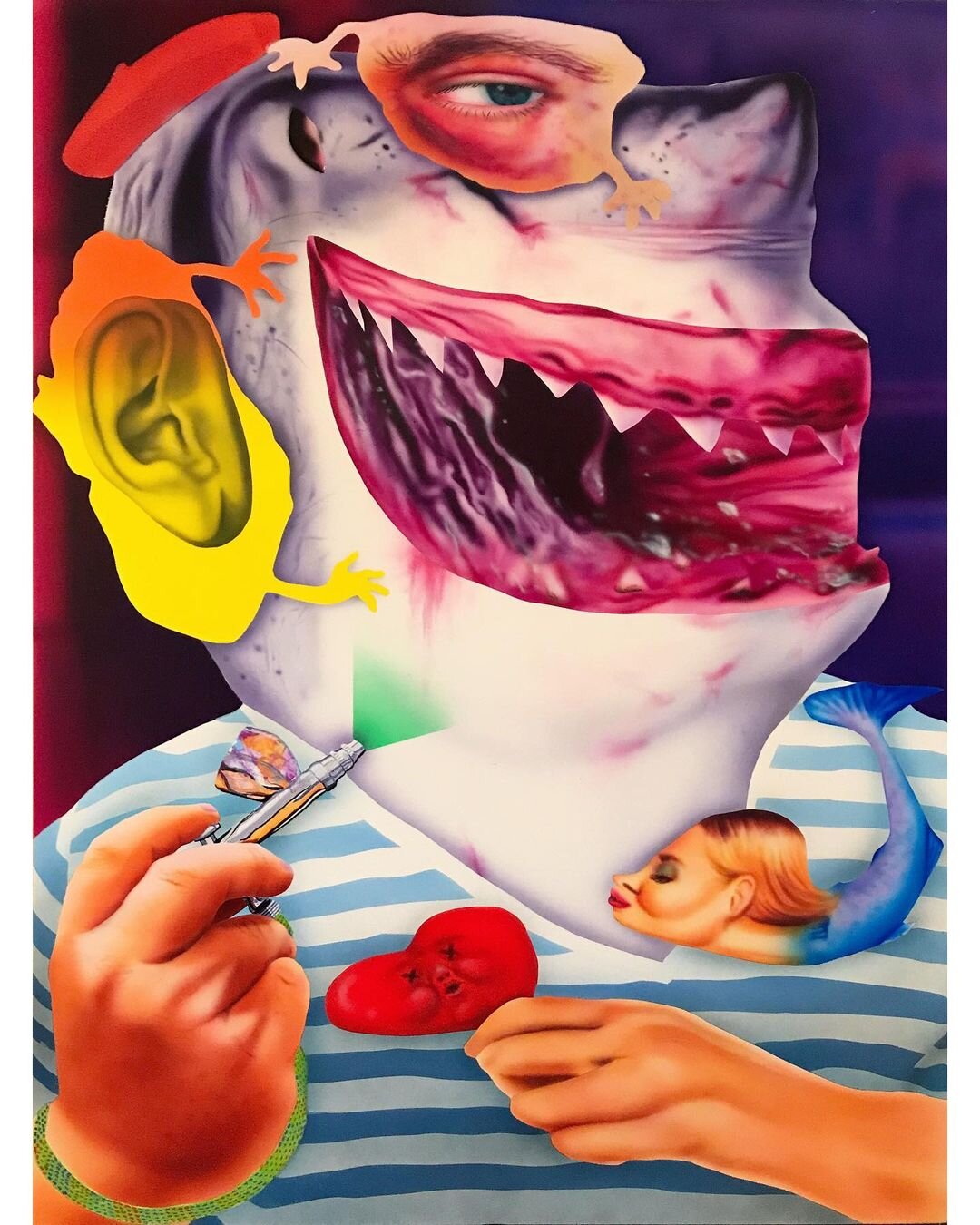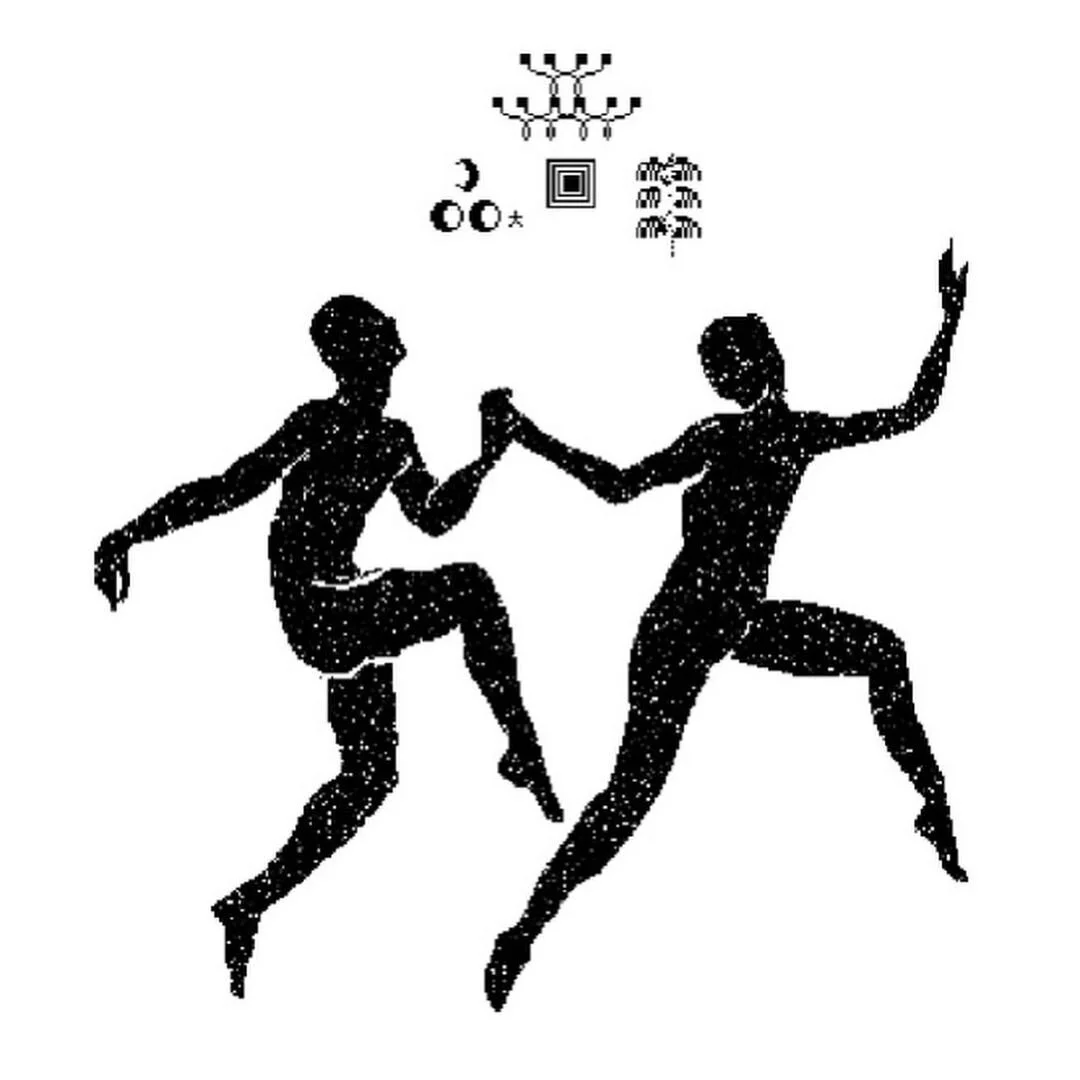Chris Regner
Chris Regner is born and raised in Milwaukee, Wisconsin and is currently residing in Providence, Rhode Island. He has recently graduated from the the MFA Painting program of Rhode Island School of Design and exhibited at the Kravetz Wehby gallery in New York. Regner’s artwork is preoccupied with issues of boyhood and fragility under the tough dominion of a patriarch who wants to instil masculinity in his son. Regner approaches his subjects through the grotesque, navigating notions of the stereotypical masculine father and the son who just can’t fit in the same mould.
Most of your artwork is usually acrylic on canvas over panels. Is this your preferred material and why?
Yes, this is the material I tend to use the most. Most of the acrylic is applied via airbrush in order to allow for smooth transitions and rendering. I started my art career drawing primarily, so I found airbrush to be a natural transition into painting. The application is very similar to building up layers of graphite pencil. I stretch the canvas over the panel so that I can wet-sand the gesso and get an eggshell finish. Having a rigid support behind the canvas allows me to mask, cut, and Dremel the surface without concern about poking or slicing holes through the material.
What would you say motivates your artwork and what is the process when it comes to creating a new piece?
The motivation varies from series to series. I tend to work with a singular concept for each body of work and I’ll see how many variations I can squeeze out of the idea before it dries out. My concepts tend to rotate around similar themes however, such as technology, masculinity, and failure. I think of each piece as a microcosm of a larger world, psychological or otherwise. After I come up with a general idea of what I want from the piece I create a digital collage to paint from. I try to leave the collages a bit rough and lacking in some way. This forces me to figure out how to make it more interesting with paint and to allow some room for the painting to define itself.
Can you tell us more about your series ‘That’s My Boy’? For example ‘That's My Boy No.3’ depicts a crying boy wearing a sports headband with floating basketballs around his head. What's the story behind this series of artwork and who is this boy in question?
This series is an alternative but related body of work that I create alongside my “Father Figures”. The perspective focuses on the fears, punishment, and long-term effects that fathers can impart on their sons. In ‘That’s My Boy No.3’ I thought of how it can feel to be a failure at sports with a father that expects perfection in all aspects of life; a dad that takes sports too seriously. I always sucked at basketball as a kid (and still do) and I was always deathly afraid of missing easy shots. My dad would be disappointed and angry. The kid in the painting is crying, the eyes are scribbled and frantic, and the background is a mess of noise, lights, and a descending shadow. I wanted to capture that sinking feeling of anxiety; that drop in your stomach that you feel when you know you fucked up. I’m a bit of a perfectionist as an adult which definitely stemmed from occurrences such as this. I think that’s a feeling a lot of people can relate to.
I think of the boy and all the other kids in the paintings as projections of myself. I want them all to feel like failures in some way and lacking in “manly” qualities.
Some of your artwork’s subjects are also anthropomorphic and grotesque. For example in ‘That's My Boy No.4’ we see a shark face with human eyes and ears. How important is this side of your work?
Grotesquerie has been a consistent, important theme in all of my work. I think of the notion of the grotesque in terms of pathetic and pitiful. The individuals displayed in my work are flawed and despicable but deserving of pity. This dichotomy of the wretched and the sad is vital to the subjects I depict as I do not want judgment cast too quickly on them. I want there to be an internal conflict inherent in the work where forces of masculinity and emasculation fight, where there exists violence and delicate care in the rendering and treatment of those depicted. To be human is to be conflicted and I want the work to complicate an easy answer.
The anthropomorphic figures came about as a bit of an accident in one of my pieces. There was something interesting to me about dangerous animals that are fashioning themselves with human elements in order to hide their true nature. In “That’s My Boy No. 4” I thought of the shark as a narcissistic artist. Sharks are maintained by fish called Remora. They tend to the shark, removing parasites, loose skin, and other debris. The shark in turn provides a host body. Narcissists tend to surround themselves with people that “maintain” their façade, so I saw a connection there. If you grew up around one of these individuals it can be a bit easier to spot them in the wild, so I like to show the crappy costuming that I am perhaps privy to.
I’m very interested in your piece ‘That’s My Boy No.5 (Father Devouring Son Devouring Son) which is an obvious reference to Goya’s ‘Saturno devorando a su hijo.’ Can you tell us more about this one?
Goya has been a long-time favorite of mine and a huge influence on my practice. This piece of Goya’s is one of the best works of art ever made in my opinion and I wanted to reflect the horror and shame that I feel exudes from Saturn. Saturn was concerned about being usurped so he engaged in cannibalistic infanticide. I thought about animals that engage in this behavior and decided to depict a baboon/human hybrid. Much like the shark painting I wanted to show the underlying savageness of the individual that is attempting to act human. As a son of an abusive parent I feel that there is always a concern about passing the behavior down to your children due to your upbringing. I wanted to reflect this in the painting by showing a lineage of baboons devouring each other. I’ve been thinking a lot about the fear I have about being a good father, if I ever am, and if genetic predisposition to mental illness is inescapable. The anthropomorphic work is a reflection of that fight against your inner animal.
Are you working on an artwork or project right now that you can tell us about?
I’m currently working on a body of work for some exciting unannounced projects in 2021. I will be posting more about these on my Instagram @raaaaagner I’m still exploring the themes I outlined in prior questions, but with a larger focus on psychological, anthropomorphic vignettes.
The year 2020 has undoubtedly been a rollercoaster for everyone in general but perhaps for artists more specifically. How has the pandemic affected you and how are you handling the situation?
My time at my graduate program at RISD was cut short (at least the in-person component). I had to make a mad scramble for a new studio space, but after the dust settled, I found myself back in the swing of making work. I think the physical distance from the institution allowed me to contemplate the overwhelming amount of suggestions and criticisms I had received over the past two years.
I began to take Instagram far more seriously and decided to treat it like a small business for selling work out of. It worked out well when I really needed it. I also was able to show my work in a group show called Vortex curated by Allison Zuckerman at Kravetz Wehby gallery in New York, which was an exciting opportunity to showcase my work amongst a group of amazing artists. My work also appeared among my phenomenal RISD cohort at 1969 Gallery in New York and in our thesis show at the RISD Museum. I feel lucky and grateful to be able to show my work in these tumultuous times.
This is all great as I wouldn’t want to attempt to get a teaching position at the moment. I’m grateful that things have been going well in my studio as everything happening outside of my cave has been so awful this year. Painting has offered some peace.
interview WARREN BARTOLO
What to read next

















